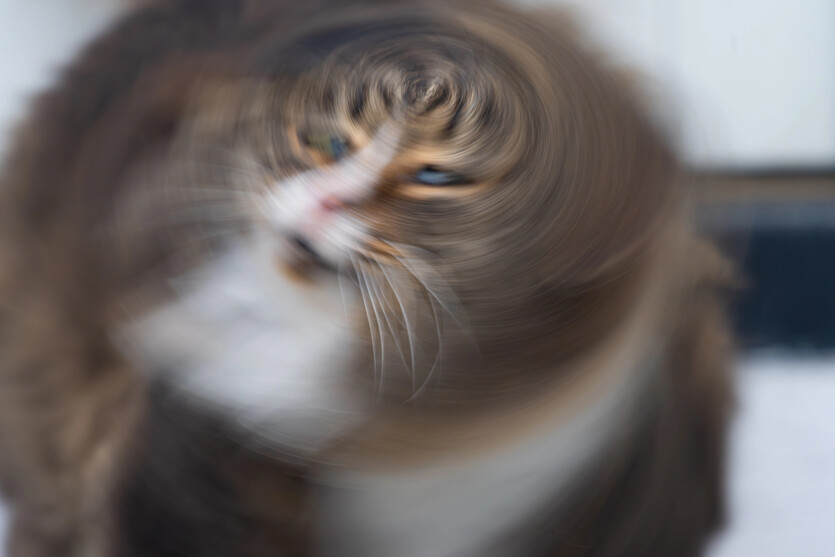
Scientists have found an effective solution problems of quantum computing.
To overcome the problems in quantum computing caused by noise and interference, scientists at the California Institute of Technology’s Atomic Warehouse for Quantum Computing (AWS) propose use the new Ocelot chip which uses «cat qubits». This is a special type of qubit that promises to significantly reduce the number of errors in quantum computing.
Traditional quantum systems need thousands of additional qubits to correct errors, but the use of «cat qubits» can reduce their number by 90%. Quantum computers that work on the principles of quantum mechanics promise revolutionary breakthroughs in medicine, materials science, cryptography, and fundamental physics.
Despite the great potential in specialized research in physics, quantum computers remain highly vulnerable error-prone and too sensitive to external interference. They are very sensitive to vibrations, heat, electromagnetic interference, and even radiation from outer space.
Researchers at AWS have demonstrated a new quantum chip architecture to overcome interference using special qubits known as «cat qubits». This type of qubit was first proposed back in 2001 and has been significantly improved since then.
The researchers were able to build the first scalable chip with «cat qubits» and named it Ocelot in honor of a spotted wildcat. In addition, the name is a reference to the internal «oscillator technology» a system that oscillates, i.e., whose readings are periodically repeated in time., which is the basis of cat cubes.
a system that oscillates, i.e., whose readings are periodically repeated in time., which is the basis of cat cubes.
«For quantum computers to be successful, we need the error rate to be about a billion times lower than it is now The frequency of errors is reduced by about half every two years. At this rate, it will take us 70 years to get to where we want to be. Instead, we are developing a new chip architecture that can help us get there faster. However, this is only an early building block. We still have a lot of work to do,» explains Oscar Painter, John G. Brown Professor of Applied and Physics at the California Institute of Technology and Head of Quantum Engineering at AWS
Similar to classical computers, quantum — also use a binary code of ones and zeros, while storing these values in a superposition state. This allows them to store all combinations of these digits simultaneously. However, quantum computers remain very vulnerable and can easily lose this superposition state.
In classical computers, additional redundant bits are used to protect data from errors For example, one bit of information is copied by three bits, so that any bit has two backup partners. If one of these bits has an error (rotates from 1 to 0 or from 0 to 1) and the other two bits do not rotate, a simple code — in this case, the so-called three-bit repeat code — can be used to detect the error and restore the odd bit.
Due to the difficulty of maintaining the superposition state with qubits, they can have two types of errors: bit rotation, as in classical digital systems, and phase rotation, in which the qubit states 1 and 0 are out of phase (or not synchronized) with each other.
Researchers have developed a large number of strategies to handle these two types of errors in quantum systems. However, these methods require a large number of additional backup qubits In fact, modern quantum computers may require thousands of additional cubes to provide the desired level of error protection.
«We are on a long-term quest to create a useful quantum computer that can do things that even the best supercomputers cannot, but scaling them — is a huge challenge. So we are trying new approaches to error correction that will reduce the overhead», — notes co-author of the study, Professor of Theoretical Physics at the California Institute of Technology and Director of Applied Science at AWS Fernando Brandao
How to «cat qubits» should reduce the number of errors in quantum computing
The new strategy is based on a type of qubit formed from superconducting circuits. These circuits are made of microwave oscillators, in which the states 1 and 0, representing a qubit, are defined as two different large-scale oscillation amplitudes Thanks to this cubits are in a very stable state and become invulnerable to bit rotation errors.
«You can imagine two states of oscillation, like a child on a swing that swings with high amplitude, but swings either to the left or to the right. The wind can come up and swing the swing, but the amplitude of the oscillation is so high that it cannot quickly switch from one swinging direction to the other», — emphasized Oskar Painter
In fact, the name «cat qubits» refers to the ability of these qubits to take on two very large, or macroscopic, states simultaneously — just like the famous cat in Erwin Schrödinger’s thought experiment, which can be both dead and alive at the same time.The only errors left to fix are phase invert errors. And correcting only one type of error means that researchers can use a repetition code similar to those used to correct bit invert errors in classical systems.
The Ocelot chip combines five «cat cubes» and special buffer schemes to stabilize their oscillations, as well as four auxiliary qubits to detect phase errors
The simple command repetition code is effective in detecting phase rotation errors and is improved by increasing the code from three «cat» qubits to five. Furthermore, the phase error detection process has been implemented to maintain a high level of bit rotation error suppression of «cat qubits»
The study was published in the journal Nature
Source: Scitechdaily
NVIDIA CEO Jensen Huang plunged shares of quantum computer developers by 40% in one phrase

Spelling error report
The following text will be sent to our editors: